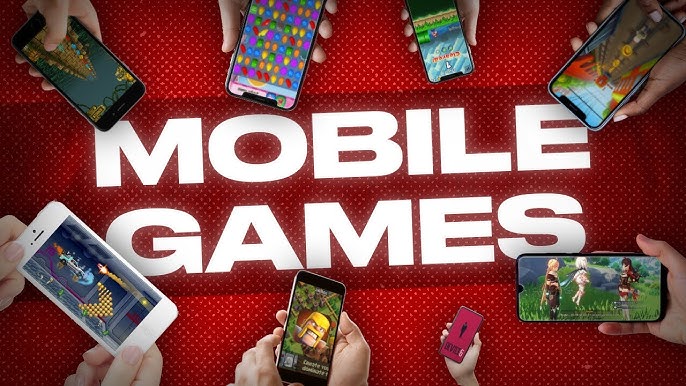
Tech by Android – The evolution of graphics in mobile games shows how technology has transformed player experiences over time. Initially, early games on mobile phones used simple pixelated visuals and monochrome displays. However, developers gradually pushed hardware limits to create richer and more immersive environments. Today, players can enjoy console-level quality in their pockets thanks to advanced processors and creative design choices. As a result, mobile gaming has become more than just casual entertainment, with visuals playing a central role in its appeal.
“Read More: Jessica Simpson Suggests Singers Drink Snake Sperm for a Beautiful Voice”
At first, the earliest mobile games displayed black and white pixels with minimal detail. Then, popular titles like Snake relied heavily on gameplay rather than looks to attract players. However, with the introduction of color screens, developers began adding basic sprites and colorful backgrounds to make games more lively. As a result, characters became recognizable with distinct shapes and vibrant palettes. Consequently, these small upgrades made gaming more enjoyable even on tiny screens. Players, therefore, began expecting better visuals as phones evolved.
As hardware improved, developers added smooth animations to bring games to life. For example, characters now ran, jumped, and attacked with fluid motion instead of choppy steps. In addition, background elements like water, clouds, and fire gained subtle movement to increase immersion. Moreover, special effects such as flashes, explosions, and sparkles appeared during player actions. As a result, these touches made games feel more dynamic and rewarding to play. Animations, therefore, elevated both storytelling and emotional impact for players.
“Read About: How SpaceX Changed the Economics of Launches”
The next major leap was the adoption of 3D graphics in mobile titles. Consequently, games introduced polygonal characters and environments with depth and perspective. As a result, players could explore worlds that felt more realistic, complete with shadows, textures, and lighting effects. For example, racing games allowed full camera rotation and smoother controls in 3D spaces. Moreover, role-playing games showcased sprawling landscapes and detailed creatures. On the whole, 3D technology turned mobile gaming into a more cinematic experience.
The rise of smartphones with HD displays further revolutionized graphics quality. Therefore, developers began creating high-resolution textures that looked sharp on larger screens. As a result, characters featured intricate designs down to clothing wrinkles and facial expressions. Additionally, backgrounds included lush forests, bustling cities, and realistic water reflections. Gamers appreciated this added clarity and richness during gameplay. Consequently, bigger screens also allowed for more on-screen action and visual detail.
Dynamic lighting added a completely new layer of realism to mobile games. For example, sunrises, sunsets, and artificial lights cast changing shadows on characters and objects. Moreover, indoor scenes became more atmospheric with glowing lamps and flickering flames. As a result, outdoor adventures felt more alive as weather effects like lightning illuminated the landscape. Developers, therefore, used these techniques to create mood and tension in storytelling. Consequently, visuals became a key part of emotional engagement.
Motion capture technology also brought human-like movement to mobile characters. Therefore, actors’ performances were recorded and translated into in-game animations. As a result, players noticed more natural walking, running, fighting, and even facial gestures. For example, story-driven games benefited greatly from expressive characters that felt alive. Cutscenes, moreover, became more cinematic as movements synchronized with dialogue. On the whole, motion capture bridged the gap between mobile and console storytelling.
Augmented reality added an exciting and innovative dimension to mobile visuals. For example, games like Pokémon Go placed digital creatures in real-world surroundings through cameras. As a result, players interacted with 3D models superimposed on streets, parks, and even living rooms. Moreover, AR created a sense of presence and novelty unmatched by traditional screens. Consequently, developers continued experimenting with blending digital and physical worlds. Players, therefore, enjoyed exploring familiar places with a completely new layer of fantasy.
While pushing visual quality higher, developers also optimized games to run smoothly. Consequently, techniques like level-of-detail scaling and efficient rendering kept frame rates stable. As a result, players with older phones still enjoyed decent graphics thanks to adjustable settings. Moreover, battery-saving modes reduced strain while preserving essential visual effects. Therefore, balancing performance and beauty became a hallmark of successful mobile design. Developers, in addition, prioritized accessibility without compromising artistry.
The future promises even more impressive mobile visuals thanks to emerging technologies. For example, ray tracing, real-time reflections, and advanced particle effects already appear in premium games. Moreover, cloud gaming could stream console-level graphics directly to mobile devices. Consequently, artificial intelligence may help generate more realistic environments dynamically. Therefore, players can look forward to lifelike characters, immersive worlds, and innovative gameplay. Mobile graphics, on the whole, will keep evolving alongside hardware and creative ambition.